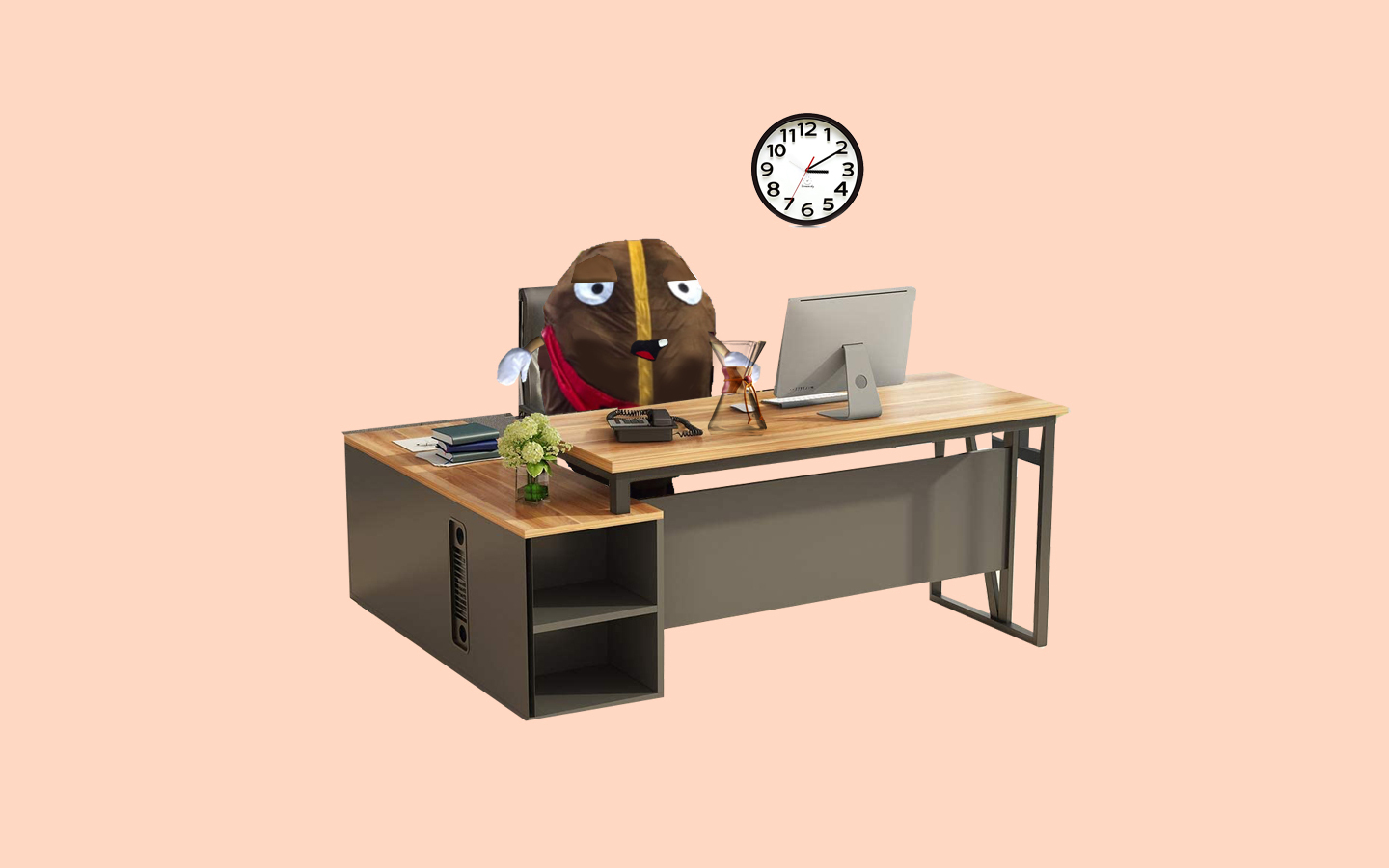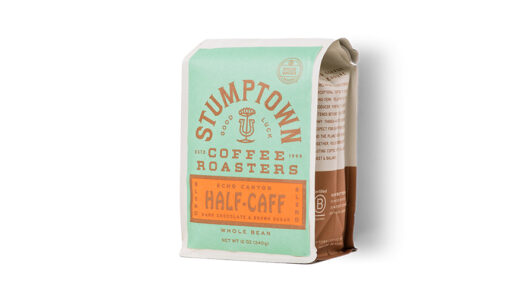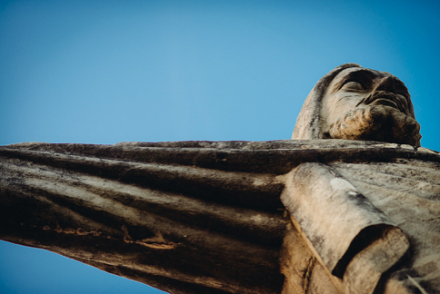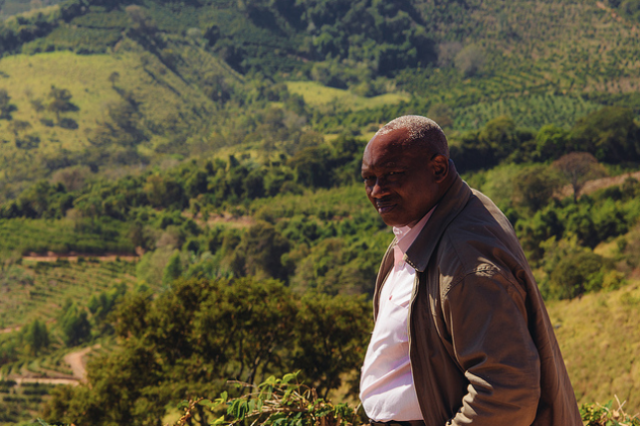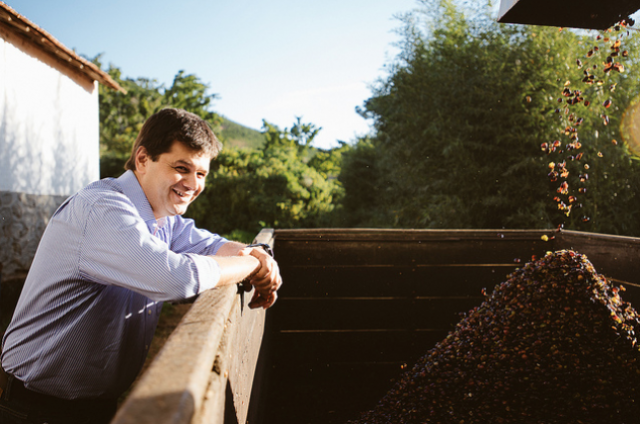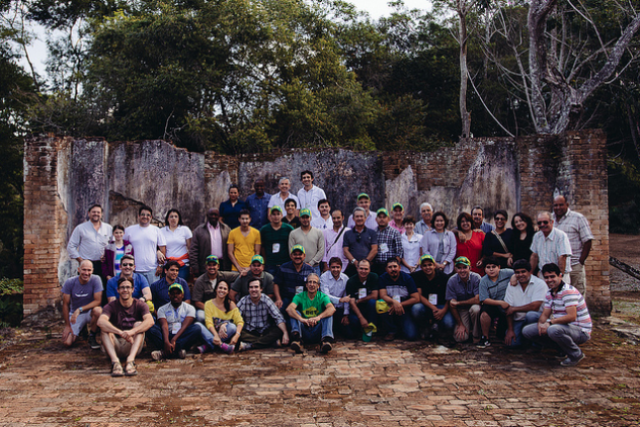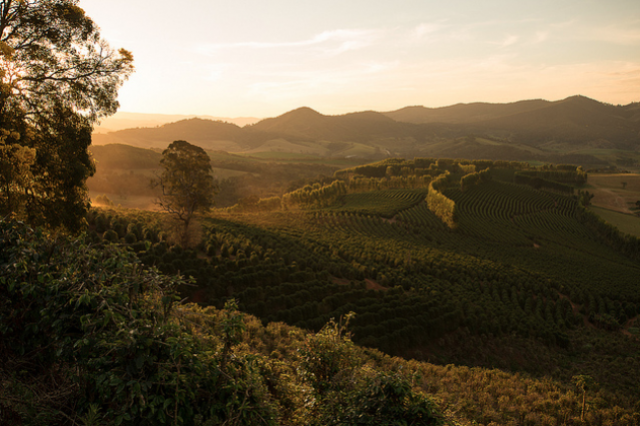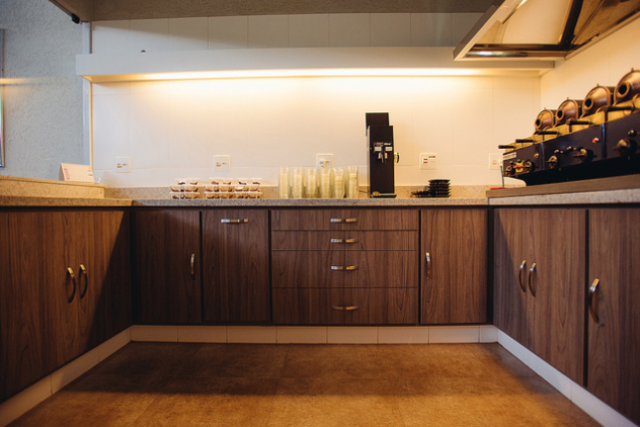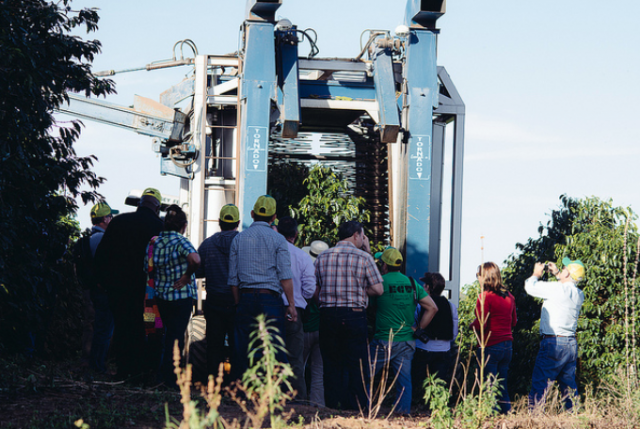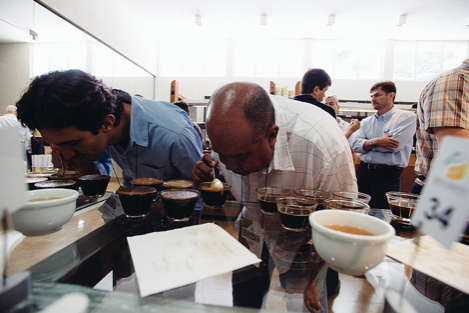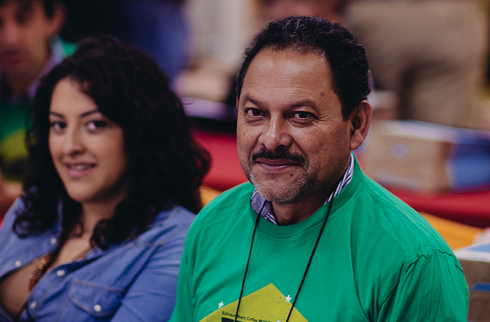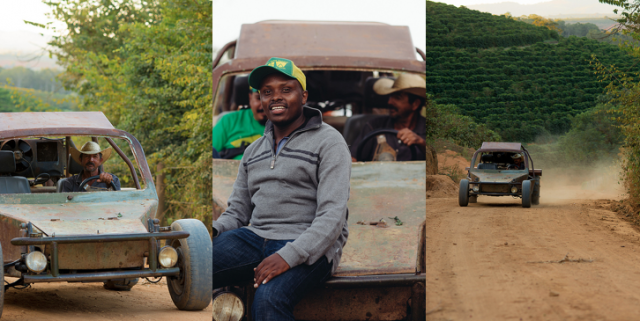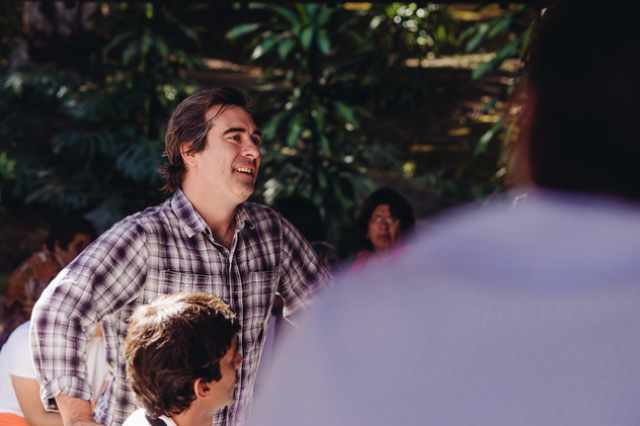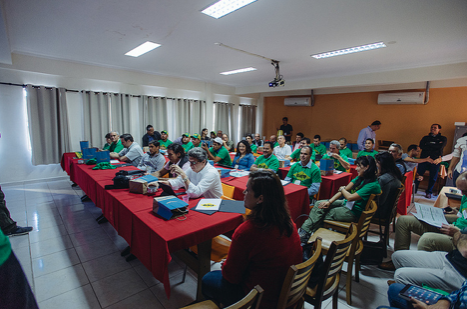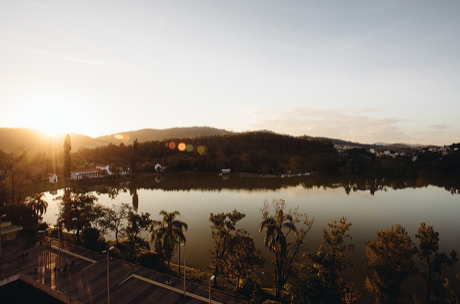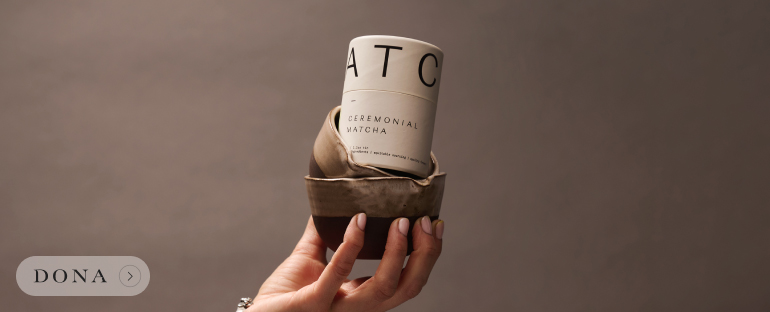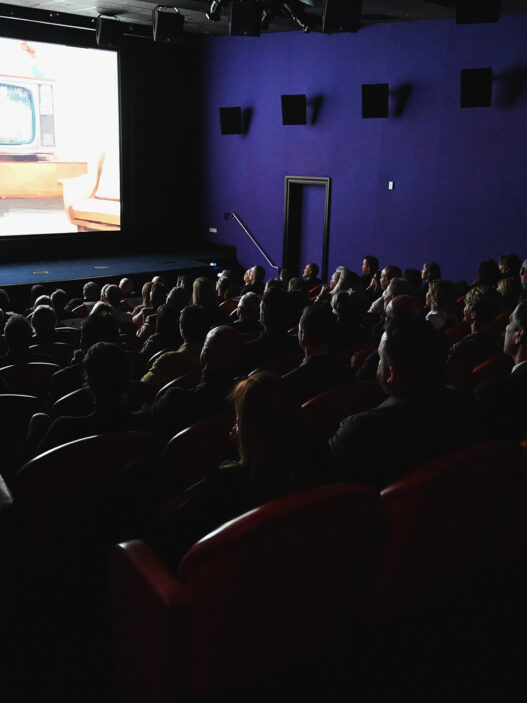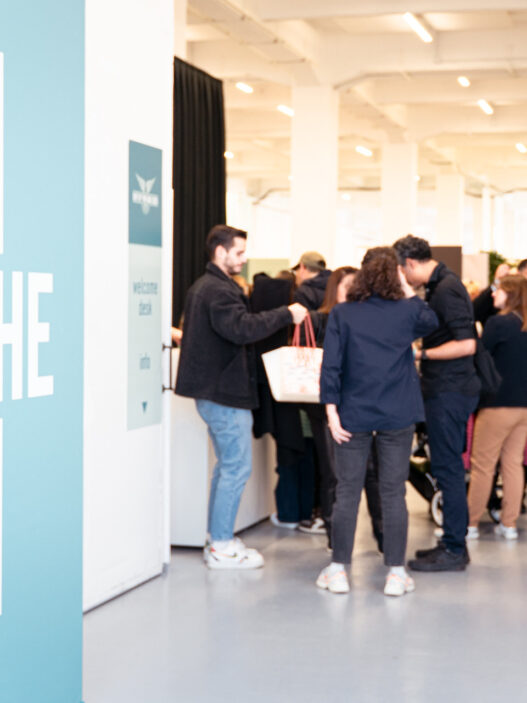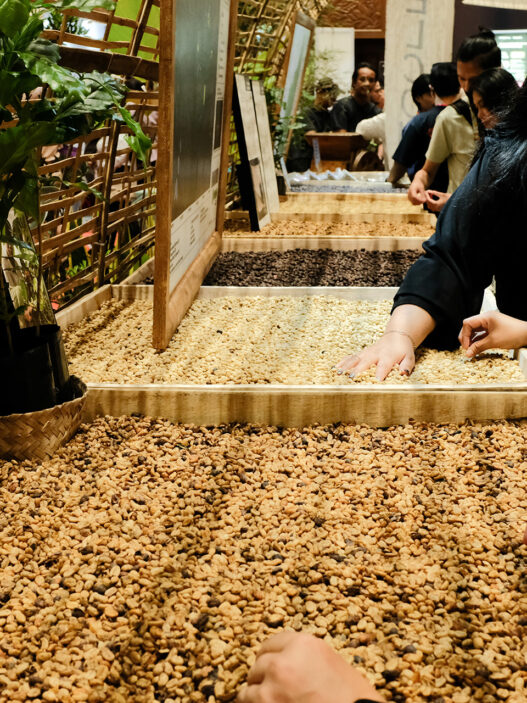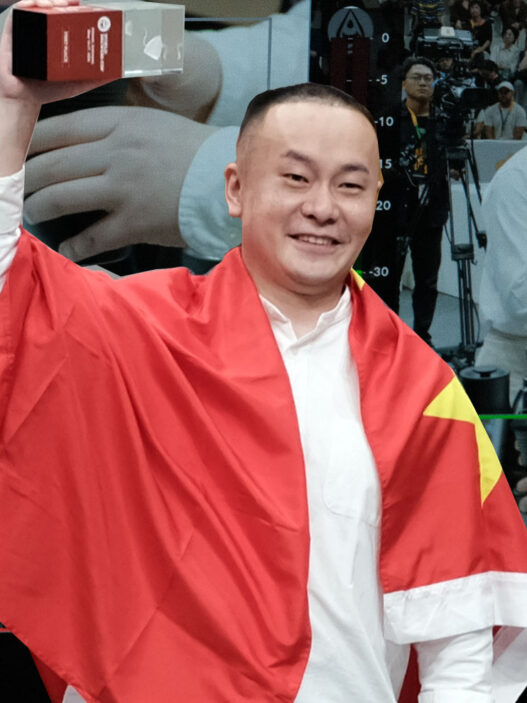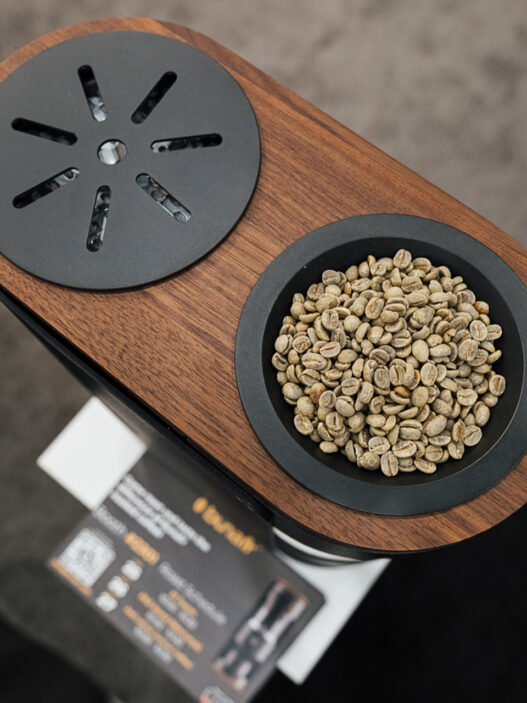Back in October 2011, we were invited along with a few other journalists and observers to take part in Intelligentsia’s Extraordinary Coffee Workshop in Los Angeles. Since that original round of coverage, we’ve developed a keen interest in sticking with the program as it travels around the world – out to Chicago in 2012, and this year to Brazil. No outsider journalists or onlookers were invited to participate at ECW 2013, which means information has been scant, limited basically to Intelligentsia’s own blog.
A few weeks ago Intelli co-owner and veteran green buyer Geoff Watts approached us with an offer: if he wrote his take on the event in Brazil, would we be interested in publishing it? Geoff Watts is an important architect for modern specialty coffee as we know it. He is one of the industry’s most influential and revered green buyers, having trafficked the world’s coffeelands to an unfathomable degree in the past decade. Much of how specialty coffee speaks now – microlots, direct trade, the expectation for knowledge of source – can be traced back to Geoff and his fellow specialty coffee pioneers in the first decade of the 21st century. When he offers to write for your coffee website, you say “yes.”
So here’s Geoff Watts, Vice President of Coffee for our friends and partners at Intelligentsia, with a #longread inside look at the 2013 Extraordinary Coffee Workshop in Brazil.
Some things or places that we don’t have personal experience with can loom large in our minds and take on an almost mystical aura. Distance makes them mysterious, mystery makes them alluring, and our imaginations take over to fill the gaps in knowledge and invest them with all sorts of emotional charge. Celebrity functions this way, as do many religions. In the world of coffee, few countries inspire as much fascination as Brazil. It is the largest producer of Arabica coffee in the world, by a generous margin. It also recently became the second largest coffee consumer, trailing only the United States in appetite for drinking coffee. Its coffees are used all over the world as principal components in espresso blends, revered for their sweetness, body, and soft fruit traits.
Most of the farmers we work with have long viewed Brazil from afar with a mix of awe, skepticism, curiosity and perhaps even a little fear. It is the Goliath to Central America’s David, in large part because its annual production report is the bellwether for everything that happens in the coffee futures market. When Brazil has a huge crop the market sinks to arguably unsustainable lows; when the crop is damaged by adverse weather conditions world prices skyrocket and farmers can receive windfall returns. Brazil also holds the position of undisputed world leader in coffee processing technology, and for decades has been at the forefront of the coffee research community. It helped give birth to the Cup of Excellence, and is responsible for producing some of the coffee varieties that account for the majority of production in the rest of the Americas: Caturra, Catuai, and Mondo Novo.
For these reasons and more, our announcement that the 2013 ECW would be held in Brazil was greeted with tremendous excitement and anticipation by our invited green coffee producers from around the world. For many it was somewhere they’d always hoped to visit but never had the opportunity, and everyone arrived with great expectations.
33 Farmers, 14 countries
This was our 5th annual ECW and the first to be held in a producing country since 2010. Farmers from East Africa, Central America, and South America convened in the second week of August for the 4-day event. Most of the growers who came have been working with us for close to a decade and had attended most of the previous workshops. We also welcomed a few newcomers, who were eager to see what this was all about.
We landed in São Paulo and immediately made our way to Poços de Caldas to spend a couple days with our hosts from Bourbon Specialty Coffee. Day One kicked off with a presentation from Silvio Leite, who led us through a riveting overview of the Brazilian coffee industry. He took us on a comprehensive audio-visual tour of the country’s growing regions, varieties, traditions, and processing methods that included both current and historical statistics about production, exports, and consumption patterns. Armed with more information than anyone could digest in one sitting, we then headed out for lunch and a visit to several farms in Vale de Grama.
Stretching across a huge valley near to the city of São Sebastião in Minas Gerais, Vale de Grama is home to a collection of farms that have regularly placed in the top ten in Cup of Excellence competitions—Fazenda Recreio, Sertãozinho, and Rainha among them. Some of these farms date back five generations to the late 1800’s and were at one point part of a gigantic estate. Today they have been divided and are owned by individual farmers, most of who are working closely with Bourbon Specialty Coffee. The farms were impressive to behold, and the climate was about as close to ideal for coffee production as can be desired, with warm days, cool nights, plenty of sun and distinct rainy seasons.
In the late afternoon we were treated to a presentation by Diogo Dias de Macedo from Fazenda Recreio about farm management and processing techniques that included a detailed breakdown of production costs. We all shared some coffees from one of the farmers from Guatemala and talked about the pros and cons of separating individual varieties, and then wandered the patios as the sun set and watched the day’s cherry harvest come in for de-pulping. It was fascinating to see the trucks arrive loaded with of a rainbow’s worth of coffee fruit shades—greens, reds, yellows, oranges, browns, blacks—along with plenty of sticks and leaves, and then get moved through a Rube Goldberg-like series of machines that sorted it all out and yielded piles of different qualities.
Day Two: Rise of the Machines
After breakfast we gathered for a talk by Joaquim Brando about the use of technology in processing coffee. There were some animated discussions about the differences between harvest systems in Brazil as compared with most other countries in Latin America and East Africa, and the profound differences in approach to cherry selection. One of the most memorable slides was of an electronic color sorter used in Brazil to separate ripe cherries from immature ones prior to de-pulping. A spirited debate about labor costs, the importance of selective harvesting, and the role of technology in specialty coffee ensued, and by the end we were all very, very ready to go and cup some coffees.
Bourbon Specialty Coffee’s laboratory is a monument to the study of coffee quality and the envy of just about everyone who visits. I’ve never seen a coffee lab quite like it, anywhere. Hi-tech water guns, a green coffee sample library, a beautiful roasting room and individual sample evaluation stations outfitted like Cessna cockpits with all the necessary instruments to measure and grade the coffees line the perimeter of the lab. Two gorgeous cupping tables in the center were host to a selection of coffees that were chosen to demonstrate the flavor impact of different processing methods. We had naturals, pulped naturals, and washed coffees side-by-side. For a moment it was hard to focus on the coffees because the lab itself was such a sight to behold, but eventually we got down to business and did some comparative tasting.
At lunch we celebrated longtime ECW attendee Erwin Mierisch’s birthday with some tasty cake before loading up in the vans for the 4 hour drive to Carmo de Minas, with a planned stop at a farm along the way that would give us a chance to see some mechanical harvesting in action.
One image I will never forget: a dozen farmers from all over the world riding on top of a 20-ft tall mechanical harvester as it chewed through rows of coffee trees, stripping them of cherries and siphoning them into a truck driving alongside in the next row. The early evening sun was drenching the landscape in soft hues of yellow and orange, and from our vantage atop the harvester we could see across the entire farm. The machine looked like something from Tron, and the whole scene was downright surreal.
Day Three: Past, Present and Future
Now settled in Carmo, alongside the lake in the town of São Lourenço, we started the day with a presentation from Jacques Pereira Carneiro, whose Carmo de Minas growing region has perhaps the most spectacular pedigree in Brazil today. Having all but dominated the Cup of Excellence competition over the past decade, the region regularly claims nearly half of the top 25 finishers each season, and has established a tremendous reputation for quality. The presentation focused on their recipe for success, and examined many of variables that contribute to coffee quality. Those that can be controlled–like nutrition, pruning, shading, and soil microbiology—were covered in detail, and most of the farmers scrawled vigorously the entire time, taking copious notes.
After a short coffee break, during which we were treated to some downright mouthwatering Colombian Geisha coffee from Santuario, lovingly brewed in V60 drippers, we moved on to a talk by me that addressed the many details of post-harvest coffee care. The information presented was an amalgam of everything we’ve learned over the last decade about quality control from farm to port, with an emphasis on the chemistry, physiology, and mechanics of coffee drying. It is hard to produce a good coffee, and even harder to produce a great one. Creating an extraordinary one is a kind of alchemy that requires tremendous attention to detail at every step. The purpose of this talk was to explore the nuances of quality control that often account for the differences between a coffee that scores in the high 80’s [in specialty coffee’s codified 100 point coffee scoring system, used as standard by green buyers around the world – Ed.] and one that reaches beyond, into rarified territory that merits special celebration.
During the afternoon we visited the site of Carmo Coffee’s state-of-the-art dry mill, which is also home to a nearly 100-year old residence that has been turned into a family museum. There were newspaper clippings from the beginning of the last century and all sorts of artifacts, coffee instruments, and photographs from a bygone era. The mill itself was a study in efficiency, and the group was especially impressed with cyclone machine that removes water from freshly pulped coffee using centrifugal force. Also very interesting was the all-in-one Pinhalense sorting machine that separates coffee grains by density and size via a number of different methods.
The day finished up with a tour of another model farm and wet mill, and some delicious pão de queijo. Looking out over the majestic landscape just before sundown made us a little wistful that we would be leaving in just two days. Pristine rows of deep-green leaved coffee trees several meters high, dotted with hardwood trees with a full bloom of bright canary flowers recalled the Brazilian national colors, recreated in natural hues. In the evening we visited a local coffeehouse called Unique Cafes in the heart of downtown São Lourenço and had some impressively prepared shots of espresso. Two thumbs up!
Day Four: Revenge of the Pruning Saw
We began the morning with a visit the Hinterland farm where we got to witness a new approach to pruning that has been coined “Safra Zero”. Due to the high costs of labor in the country some Brazilian farmers have found that it is more profitable to sacrifice a year of production in order to ensure a better yield and more uniform ripening in the subsequent season. Because coffee tends to have a biennial yield pattern, where one season of good production is followed by a season of low yields, this approach makes a lot of sense. Rather than use precious resources to work a farm during a poor harvest, farmers cut the branches down to around 30 centimeters and allow the tree a full two years to grow new shoots. The result is a fantastic harvest in the second year, and the efficiencies gained outweigh any loss of volume that results from the aggressive pruning.
They’ve created machines that separate any remaining cherries from the pruned branches and collect the leaf and branch material for composting. It was shocking to witness, and for most of the farmers from outside Brazil it may have even been a little horrifying watching the trees get butchered, but it makes a lot of sense in context and represents a very creative solution to the problem of rising labor costs and climate uncertainty.
We had a delicious home-cooked lunch on the farm and returned to the hotel for a handful of concluding presentations. Intelligentsia founder Doug Zell gave us an insightful overview of the specialty coffee industry that looked at both the present and the future of the quality-based coffee market and talked about strategies for succeeding in 2014 and beyond.
James McLaughlin of Intelligentsia delivered a compelling update on Intelligentsia’s DT coffee buying program, addressing both the methods and goals of our purchasing system. This included ongoing performance reports for every coffee during its lifespan, along with volume projections for the upcoming season.
I finished off the event with an explanation of our new cupping form and a detailed review of the criteria we are using to evaluate coffee quality during the selection process, taking time to discuss our contemporary views on scoring coffee and the relative importance of the many kinds of sensory stimuli we detect.
Finale
This event has become one of the centerpieces of our Direct Trade model for roaster-farmer partnership at Intelligentsia. By bringing coffee farmers together every year to learn from each other and witness firsthand the specific innovations and approaches that are unique to individual countries, I firmly believe we are successfully increasing the collective knowledge base and providing fresh motivation to continue pushing the boundaries of what is possible with coffee quality.
The ECW is always about collaboration, and much of the value to the producers who attend comes from the conversations with their peers throughout the 4-days we are together. It is all about synergy: putting farmers from diverse backgrounds but similar goals together in a space that encourages creative thinking and information exchange. We all learn from and inspire one another, and I’m quite sure that everyone feels the same way I do when I say, in all sincerity, that ECW attendees leave this event annually with new ideas, greater determination to improve our individual works, and a profound sense of community that reassures us in the face of a rapidly changing coffee landscape.
Photos courtesy of Intelligentsia. Check out more photos via Intelligentsia on Flickr.





